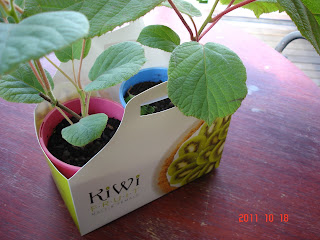
First, catch your hare” is the immortal first line commonly thought to originate in the recipe for hare soup by Hannah Glasse an author of the most influential English cookbook of the eighteenth-century. Although the familiar words, ‘First catch your hare,’ were never to be found in Mrs. Glasse's famous volume, I think in terms of culinary merit it is still being true today. Nothing is closer to the truth for many Overseas Singaporeans who want to cook a familiar dish in a foreign country where the main ingredient is unavailable. Unless the main ingredient can be substituted to accomplish a good end result, it is like cooking beef rendang without coconut or eating chui kueh without the chaipoh(preserved raddish).
I have been delaying my attempt to cook tagine until I have made the preserved lemon which is an essential ingredient in most Middle Eastern cookings. Now, that my homemade preserved lemons are ready in the pantry, I could not wait to cook the long awaited Moroccan Chicken Tagine.
Ingredients
1.5kg Chicken pieces
3 medium potatoes, peeled and sliced
½ cup green peas
1 small carrot, chopped
4 tomatoes, sliced
3 onions, sliced
150g of pitted olives
4 preserved lemons, cut rind only into strips
2 bay leaves.
Chermoula Paste
4 cloves garlic
4cm ginger, sliced
1 large onion, sliced
2 preserved lemons, cut rind only into strips
1tsp chili flakes
1tsp paprika
½ tsp turmeric
1Tsp coriander
3 tsp cumin
1 tsp pepper
1 tsp salt
1 bunch fresh coriander coarsely chopped
½ cup flat leaf parsley coarsely chopped.
½ cup oil
Method
To make chermoula paste, process ingredients in a blender to a paste. Set aside 2 tablespoon of chermouila paste and pour the remaining paste over chicken, mix to coat. Mix potatoes and reserved chermouila paste in a bowl.
Pour 2 tablespoon of oil into tagine, and placed sliced tomatoes and onions on the base of tagine. Add chicken pieces in the centre and pile the potatoes and carrot in order to fit into the tagine. Scatter with olives and preserved lemons and bay leaves. Cook covered on low heat for 45 minutes. Add peas and cook for a further 15 minute. Serve hot with couscous.





